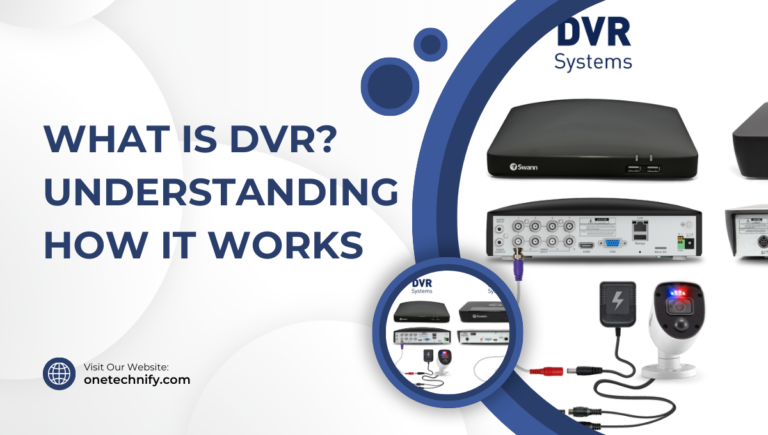Choosing the right software development methodology for your project can be a daunting task, especially with the abundance of options available. However, with the integration of agile practices and an agile framework, developers can make informed decisions to ensure successful project delivery. DevOps methodology can also be incorporated to streamline the development process and enhance collaboration between teams. So, whether you’re a developer or a project manager, selecting the appropriate methodology is crucial to achieving project goals.
Software development methodologies are approaches or models used in software engineering to guide the process of developing software. There are several different types of software development methodologies available, such as incremental software development methods, waterfall methodologies, Scrum, and more. Each approach has its unique strengths and weaknesses. Agile practices and agile frameworks can be implemented to improve project management, while DevOps can be used to enhance the software development process.
When selecting the right methodology for your project, there are several factors you should consider. These include the size and complexity of your project, team size and experience level, budget constraints, timeline restrictions, and more. It is important to determine the appropriate development approach, such as agile methodologies, that aligns with the software development process. Agile software development can provide a flexible and iterative approach to project management, allowing for quicker adaptation to changes in requirements and priorities.
So let’s dive in! Choosing the right development approach and agile methodologies can be a bit daunting, but don’t worry, I’m here to guide you through it step by step. It’s important to consider your project goals and opt for an iterative process that allows for flexibility and adaptation.
Factors to Consider When Choosing a Software Development Methodology
Quality of the Final Product
When choosing a software development methodology, developers must consider the quality of the final product. Agile methodologies can ensure that your team delivers high-quality software with improved functionality that meets or exceeds customer expectations. Prototyping is also an essential aspect to consider to guarantee that the final product meets the desired standards.
One approach to ensuring quality is by adopting an Agile methodology, which emphasizes iterative prototyping, continuous testing, and feedback throughout the development process. This allows developers to catch and fix issues early on, resulting in higher-quality applications.
Team Size and Structure
The size and structure of your development team, as well as the expertise of your developers, can impact your choice of agile methodologies. For example, if you have developers who are skilled in prototyping, you might opt for a methodology that emphasizes this approach to software development, such as Agile or Lean. Additionally, if you have a small team, you might choose a lightweight methodology like Scrum that focuses on quick iterations and frequent communication.
On the other hand, if you have a larger development team with multiple departments working on different phases of the project, you might need to consider agile methodologies like prototyping to ensure everyone stays aligned.
Project Complexity
Another key factor to consider when choosing a software development methodology is project complexity and phases. If your product solution involves many moving parts or complex integrations with other systems, you may need a more robust methodology like DevOps that emphasizes collaboration between developers and operations teams. One of the pros of this methodology is its ability to seamlessly integrate different phases of the development process.
Alternatively, if your software development team’s project requires a specific software methodology and solution with minimal dependencies or integrations, a simpler method like Kanban may be sufficient for your product.
Flexibility and Adaptability
Finally, when selecting a software development framework type, it’s essential to consider how flexible and adaptable it is to meet the needs of your product. In today’s fast-paced business environment, requirements for your product can change quickly. Your chosen framework should allow your development team of skilled developers to be flexible in adapting to these changes without sacrificing quality or timelines.
Agile and Waterfall are two popular software methodologies that developers use to manage their product development process. Agile methodologies, which focus on continuous feedback loops and iterative development cycles, are highly adaptable and flexible, making them ideal for clients who want to be involved in the development process. However, some companies prefer more structured methodologies like Waterfall that provide clear milestones and deliverables, which can be helpful for developers who need a more defined framework to work within. Ultimately, the choice between these two methodologies will depend on the needs of the client and the product being developed.
Understanding Project Requirements: Key Steps for Successful Software Development

Clear project requirements are key to the success of any software development project.
Before embarking on any software development project, developers need to have a clear understanding of the product requirements provided by the client. This includes identifying the goals and objectives of the project, as well as defining what needs to be accomplished to meet those goals and following an effective model. Without a clear understanding of these requirements, it can be difficult to develop an effective plan for the project.
To ensure that your software development project is successful, it is important to involve all developers in defining functional requirements based on basic principles of software development methods. This will help ensure that everyone has a shared understanding of what needs to be accomplished and what the end product should look like, whether you are using the waterfall software development method or the incremental software development method. It also helps identify potential roadblocks early on in the process.
Understanding client requirements and goals is crucial in planning the development process.
In addition to defining functional requirements, it is important for developers to understand their client’s goals and objectives for the project. This will help them develop a plan that meets the basic principles of software development method while also ensuring that they stay within budget and on schedule. An incremental software development method can be used to ensure that the product is delivered in stages and meets the client’s evolving needs.
To achieve this, developers should use a methodical approach at the beginning of every software development project to sit down with their client and discuss their vision for the end product. Ask questions about their expectations, preferences, and any concerns they may have. This model will help developers tailor their approach accordingly and avoid misunderstandings later on in the process.
Involving all team members in defining functional requirements ensures a clear picture of the end product for end users.
As mentioned earlier, involving all developers in defining functional requirements using software development method basic principles can help ensure that everyone has a shared understanding of what needs to be accomplished. This approach follows the incremental software development method and ensures that each member feels valued and invested in achieving success together as a team, rather than following the waterfall software development method.
During this stage, encourage open communication among developers and team members so everyone feels comfortable sharing ideas or concerns about how best to accomplish tasks within each phase of the software development life cycle. This will ensure that the product meets the client’s requirements and expectations.
Analyzing Project Scope and Complexity
Choosing the right software development methodology for your project is crucial to ensure its success, especially when dealing with complex projects. One of the most important steps in this process is analyzing the project’s scope and complexity to determine which model will work best for your team of developers.
Factors to Consider in Analyzing Project Scope
Project size, tasks, cost, time, and constraints are all critical factors to consider when analyzing project scope using software development method basic principles. You need to understand the size of your project and how many tasks are involved for developers. Incremental software development methods can be used to determine how much time it will take to complete each phase of your project, rather than using the traditional waterfall software development method.
Software development is a complex process that requires careful consideration of various factors. One of the most critical aspects is choosing the right model for your project. Developers need to select a development methodology that fits their requirements and ensures efficient software development. Cost is another significant factor that needs consideration. You need to know how much money you have available for your project so that you can choose a methodology that fits within your budget.
Time is also a crucial factor that needs consideration in software development. You need to know how much time you have available for your project so that developers can choose a methodology that fits within your timeline.
Constraints such as regulatory requirements, technical limitations, or resource availability may also impact the choice of development methodology for software developers.
Complex Projects Require Thorough Risk Assessment
Complex software development projects require a more thorough risk assessment than simple ones, following the basic principles of software development methods. A risk assessment helps developers identify potential problems before they occur and allows teams to put measures in place to mitigate those risks using either the incremental software development method or the waterfall software development method.
Risk assessments involve identifying potential risks associated with each phase of the project and developing strategies for managing them. The goal is not necessarily to eliminate all risks but rather to manage them effectively so that they don’t delay or derail the project. This applies to developers using the waterfall software development method as well.
Small Projects May Need Simpler Methodologies
Small software development projects may not require complex methodologies; instead, simpler methodologies may be more appropriate for software developers. Agile methodologies like Scrum or Kanban are popular choices for smaller software development projects because they allow teams to work quickly and efficiently while still delivering high-quality results.
Simpler software development methodologies can be executed quickly by developers without extensive planning phases or documentation requirements typically found in more complex methodologies.
Common Software Development Methodologies
Choosing the right software development methodology for your project is crucial to ensure its success. There are various software development methodologies available, and selecting one that aligns with your team’s structure and project requirements can help developers achieve their goals efficiently.
Agile Methodologies
Agile methodologies are based on iterative and incremental processes that prioritize customer collaboration and responding to change. It emphasizes delivering working software frequently, typically every few weeks, instead of waiting until the end of a long development cycle. Agile practices also promote teamwork, self-organization, and flexibility for developers.
There are several frameworks under agile methodologies, including Scrum, Kanban, Lean Development, and Extreme Programming (XP). Scrum is one of the most popular frameworks under agile methodology that software developers often use. It involves breaking down complex software projects into smaller tasks called sprints that can be completed within two to four weeks.
Kanban is another framework under an agile methodology that focuses on visualizing workflow by using a Kanban board. It helps developers track their progress in software development while ensuring they do not take on more work than they can handle at any given time.
Extreme Programming (XP)
Extreme Programming (XP) is an agile software development method that emphasizes quality code and frequent releases. XP advocates for continuous testing throughout the entire software development life cycle to identify bugs early in the process. This approach is particularly useful for developers who want to ensure that their code is of high quality and that they can release new features quickly.
One of XP’s core principles is pair programming where two developers work together on a single task or feature simultaneously. This approach promotes knowledge sharing among team members while ensuring better code quality. However, this does not align with the waterfall software development method.
Rapid Application Development (RAD)
Rapid Application Development (RAD) is a software development method that prioritizes rapid prototyping and quick feedback cycles over planning upfront. RAD aims to deliver functional prototypes quickly so developers and stakeholders can provide feedback before moving forward with further development.
RAD, a rapid application development method, relies heavily on cross-functional teams of developers who work collaboratively to deliver software applications quickly.
Advantages and Disadvantages of Top Software Development Methodologies
Waterfall methodology
Waterfall methodology is a traditional approach to software development that involves developers. It follows a linear and sequential process where each phase must be completed before moving on to the next one. This method starts with requirements gathering by developers, followed by design, implementation by developers, testing, deployment, and maintenance.
Pros
- The Waterfall methodology provides a clear structure that is easy to understand for both the software developers and stakeholders.
- Easy to understand: As each phase of the software development method has specific deliverables, developers can easily track progress against milestones.
Cons
- Inflexible: Once a software development method phase is completed, developers find it difficult to make changes without starting over from scratch.
- Difficult to make changes: Changes are costly as they require restarting the software development method from scratch, which can be time-consuming for developers.
Agile methodology
Agile methodology is an iterative approach that emphasizes flexibility and adaptability in software development. It involves continuous collaboration between software developers and stakeholders throughout the development process.
Pros
- Adaptable: Agile method allows developers to make changes to the software at any point in the development process.
- Promotes collaboration: Continuous collaboration between developers and stakeholders ensures that everyone is aligned on project goals, regardless of the software development method used.
Cons
- Requires experienced team members: Agile, a popular software development method, requires skilled developers who can work independently while also collaborating closely with others.
- Without proper planning or management, the agile software development method projects can quickly become chaotic.
Scrum methodology
Scrum is an agile framework and a popular software development method that focuses on teamwork and communication. It divides work into smaller chunks called sprints that typically last two weeks or less.
Pros
- Efficient communication and teamwork: Scrum, a popular software development method, promotes efficient communication among team members through daily stand-up meetings.
- Flexible approach: Scrum, a popular software development method, allows teams to adjust their priorities based on changing requirements during each sprint cycle.
Cons
- May not work for large software development projects: Scrum may not be suitable for larger projects that require more structure and documentation, as it is a software development method that prioritizes flexibility and adaptability over rigid planning.
Tips for Choosing the Best Methodology for Your Project
Identify the Type of Project You’re Working On Before Selecting a Methodology
Choosing the right software development methodology is essential to ensure your project’s success. It all starts by identifying what type of project you are working on before selecting a methodology.
For instance, if you are involved in development of a small-scale project with limited resources, it’s best to go with a lean methodology. Lean methodologies focus on delivering value quickly and efficiently while minimizing waste. This approach works well when the team has limited resources and wants to deliver results fast.
On the other hand, if you are working on large-scale projects with changing requirements, then spiral methodology is ideal. Spiral methodology breaks down complex projects into smaller parts that can be managed more easily. This approach allows teams to adapt to changes in requirements as they arise during development.
Consider the Level of Feedback and Testing Required for Your Project
Another factor that determines which methodology is best suited for your project is feedback and testing requirements during development. If your project requires frequent feedback and testing, an iterative approach may be suitable.
Iterative methodologies involve continuous feedback from stakeholders throughout the development process. The goal is to deliver small increments of functionality at regular intervals while gathering feedback from stakeholders along the way.
In contrast, if your development project does not require much feedback or testing, then a more traditional waterfall approach may suffice. Waterfall methodologies follow a linear sequence of steps where each development phase must be completed before moving onto the next one.
Lean Methodologies Work Well for Smaller Projects with Limited Resources
As mentioned earlier, lean methodologies work well for smaller development projects with limited resources. These approaches aim to minimize waste by focusing on delivering value quickly and efficiently.
One popular lean methodology for software development is Kanban, which involves visualizing workflow using boards or cards that represent tasks or work items. The goal is to limit work in progress (WIP) to prevent overburdening the development team and improve efficiency.
Selecting the Most Appropriate Methodology for Your Specific Project Needs
Choosing the right software development methodology is crucial for the success of your project. It requires careful consideration of various factors such as project requirements, scope, complexity, and team capabilities. By analyzing these factors and understanding different methodologies, you can select the most appropriate one for your specific needs.
We have also highlighted key steps for successful software development, including understanding project requirements and analyzing project scope and complexity. We have explored common software development methodologies along with their advantages and disadvantages.
To choose the best methodology for your development project, you need to weigh the pros and cons of each option against your specific needs. Consider aspects such as team size and experience level, project timeline, budget constraints, customer involvement, and flexibility requirements.
In conclusion, selecting the right software development methodology is critical to ensure that your project meets its goals on time and within budget. By following our tips for choosing the best methodology for your specific needs, you can increase your chances of success.
FAQs
Q: What are some common software development methodologies?
A: Some common software development methodologies include Agile (Scrum), Waterfall, Kanban, Lean Software Development (LSD), Extreme Programming (XP), Spiral Model, Rapid Application Development (RAD), and DevOps.
Q: What are some advantages of using Agile (Scrum) methodology?
Agile (Scrum) methodology offers several benefits in development such as increased flexibility to adapt to changing requirements throughout the project lifecycle; faster delivery times due to shorter sprints; improved collaboration among team members; enhanced customer satisfaction through regular feedback loops; better risk management through continuous testing and quality assurance.






